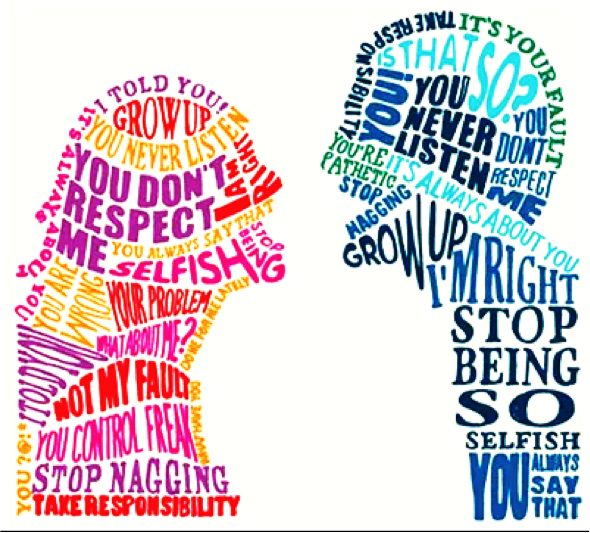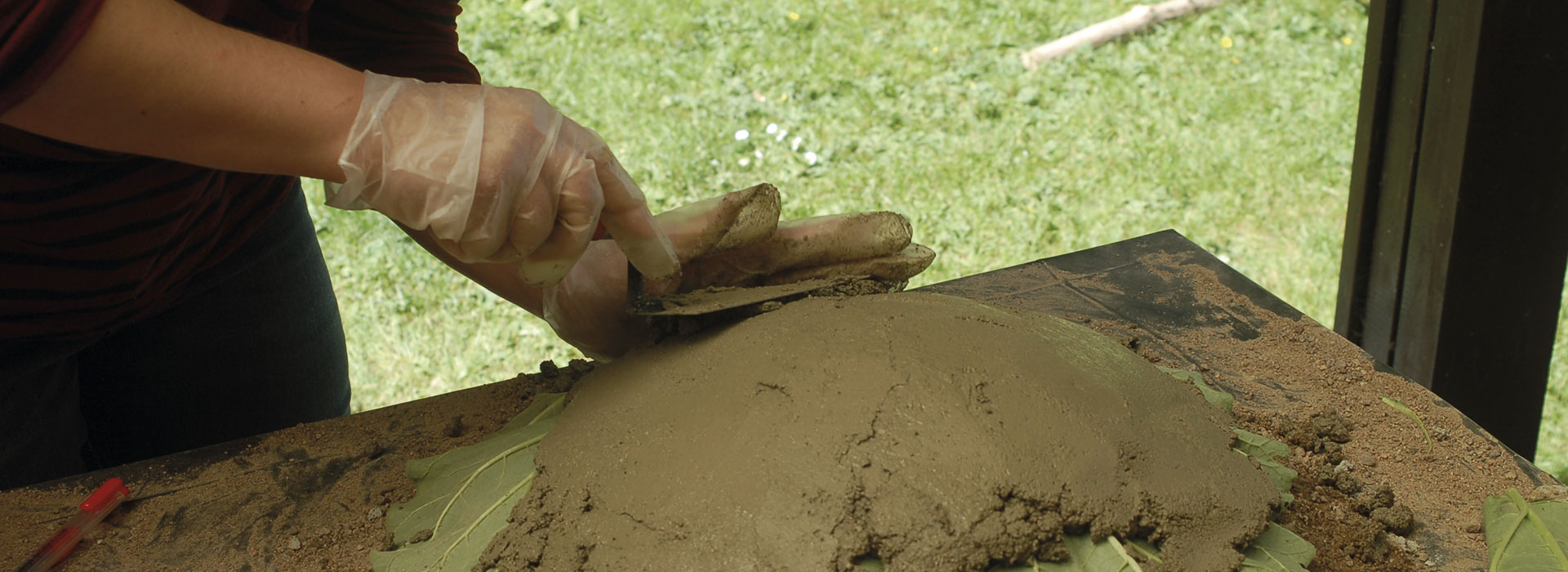- Introduction
- 1. DEFINITIONS AND ORIGIN OF CONFLICTS
- 2. TYPES OF CONFLICT IN AN URBAN GARDEN
- 3. ATTITUDES THAT CAN BRING ON CONFLICT
- 4. TECHNIQUES OF CONFLICT RESOLUTION
- 5. REQUIRED RESOURCES TO DEAL WITH CONFLICTS
- 6. GOOD PRACTICES
- Excercises and Self Assessment
- References & Links
Overview:

This module describes conflicting circumstances that may happen in the daily life of any person working in an urban garden. The module demonstrates how to intervene to find solutions.
This module puts a special focus on the following:
- The type of conflicts which occur within the urban garden
- Dynamics and attitudes
- Conflict resolution
- Maintaining good relations
Knowledge
- How to recognise and identify a conflict
- Techniques to handle conflict situations
- How to mediate
Skills
- How to increase open and bilateral communication
- Learning to listen actively
- Valuing multicultural perspectives
- Promotion of interpersonal cooperation.
Attitudes
- Being open minded
- Mutual respect
- Dealing with prejudices
- Patience and calm in stressful situations.
- Conflict is an inevitable feature of social relations. The key to the problem is that any conflict can take a destructive or constructive course. Therefore, the issue is not to eliminate or prevent conflict but to know how to avoid situations where conflict arises and deal with conflict using sufficient resources so that those involved can be enriched.
- The urban garden, is part of the community and is not exempt from conflictive and delicate situations, which require certain professional skills.
- Urban gardens often have a broad cultural diversity of people. This can sometimes lead to stressful situations experienced by people using or working in the garden. In addition, our case studies highlight the importance of implementing certain policies and good practices in urban gardens that help to reduce the intensity of the conflicts and the search for possible solutions that satisfy all parties, turning the garden into a place which is inclusive and welcoming.
Conflict is light and shadow, danger and opportunity, stability and change, strength and weakness, the impulse to move forward and the obstacle it opposes. All conflicts contain the seed of creation and destruction (Sun Tzu, 480-211 BC).
According to the Royal Academy of the Spanish Language there are many definition of conflict including "combat or fight"; "armed confrontation" ,"trouble, unfortunate situation " and finally " problem, issue, matter of discussion. "
Until recently, conflict was considered something negative to avoid, something related to mental issues, social disorders and war.
Conflict can have many positive functions and values such as:
- Avoiding lack of progress
- Stimulate interest and curiosity
- Become the origin of personal and social exchange
- Help establish individual and group identities and get to know each other better
- Help learn new ways to respond to problems
- Help build fruitful and lasting relationships
Origin
Conflict management starts from the knowledge of the cause that triggers this conflict. In general, disagreements or misunderstandings usually come from:
- Bad communication: different communication styles can lead to misunderstandings between people.
- Different values: the lack of acceptance and understanding and different perceptions of reality or points of view are a source of conflict.
- Different interests: conflict occurs when people focus exclusively on their personal goals, ignoring common goals and the good of the group.
- Personality clashes: all social environments are composed of individuals with different personalities and, unless all parties understand and accept a common approach, conflicts will occur.
- Poor performance: when one or more people within a group are not at the same level of commitment and common values, conflict is inevitable.
- Poor resources: Too often, people feel they must compete for resources available to perform various activities. An environment characterised by few resources is a place where conflict can be triggered.
When people share a common space such as an intercultural garden, we often find the following types of conflicts:
- Intrapersonal. This is a personal conflict and is usually a clash between the acts and the qualities, characteristics and a nature of a human being, violating it. There can be a situation where people who are forced to leave their home and their family because of circumstances not under their control (war, discrimination, poverty, violence).
- Interpersonal. These are the conflicts we have with other people. It is necessary to put them into context so that the people involved with the conflict can achieve their objectives. This type of conflict could be generated by a lack of social skills, prejudice or different ideas and perceptions.
- Inner group. They occur within the group, among its members. For the resolution of these types of conflicts, it is necessary to examine certain elements such as trust, the degree of commitment, empathy, communication between members, mutual knowledge, etc. For example, there may be people from different backgrounds, cultures or experiences in the same garden.
- Amongst groups. They are the most complicated to address and occur between different groups. It is necessary to develop mutual knowledge and exchange, creating a collaborative situation that benefits the different groups. For example when the garden is open to different groups that encounter each other, misunderstanding or even physical conflict or violence can occur. → (Concepcion Arenal urban garden)
Intercultural gardens are naturally common spaces, and should be a place of integration, harmony and enriching experiences. However, they are not always free from conflict. Recent experiences in these gardens shows a number of conflict areas which are:
- Language and communication problems. In a multicultural and multilingual environment it is sometimes difficult to instill certain ideas using another language. This, together with a lack of understanding of the local culture can make communications difficult, especially when there are new gardeners. → (See training module 3 to find out more information)
- Lack of constant commitment. Due to different personal situations that we can find among the gardeners of an intercultural garden, it is sometimes difficult to ensure commitment from migrants to make sure schedules are adhered to that are required to carry out the activities of the garden.
- Racism. Sometimes racist behaviors are endorsed by the local population and the users themselves, who interact with the rest of the gardeners in the community gardens.
- Lack of participation in the activities organized by those responsible for the garden. Initially, cultural differences can be an obstacle to developing daily activities within an urban garden.
- Theft. Unfortunately theft can also take place in an environment that has been created to promote integration and multicultural co-existence.
- Behavior regression. Due to the personal situations of some users of the garden (addiction issues, stress, mental health problems) sometimes there is a setback in their ability to successfully integrate that can lead to a worsening of their situation. This can lead to conflicts between the gardeners and those responsible.
- Clashes with authority. Although open communication is encouraged in a multicultural and integration environment, the presence of managers or coordinators is important to perform the tasks of a garden
- Egotism and personal benefit. Sometimes gardeners do not understand the benefits that an intercultural garden can bring to the group and only pursue their own benefit without getting involved with others.
- Poor resources. The shortage of funding, materials and human resources can be of crucial importance in the development of the activities of an intercultural space.
In literature there are countless classifications about the approach people take in the presence of a conflict, but the most common are:
- Competitive approach. The idea of winning or losing prevails, in which the person initially wants to win at all costs. This is dangerous since it can create an attitude of continuous competitiveness, revenge and resentment.
- Compromising approach. This consists of yielding and even denying the conflict so that it does not move on and does not create an opportunity to resolve anything. Sometimes it may be the best option to calm down the situation and it is important to help the other party to settle in the conflict to achieve their interests.
- Collaborative approach. It is, without any doubt, the most enriching as it takes into consideration the parties in conflict, generating a win-win outcome. It will generate another course of action and the possibility of reconciliation.
From the works of Balke and Mouton (1964), authors such as Rahim (1997) and Thomas (1992) developed the best-known classification of conflict management behavior.
- Competition: characterised by pursuing one's own objectives without considering those of the opposing party with which we are in conflict.
- Avoid: characterised by not facing the problems. Conflicts are postponed, without thinking about the needs at stake, so that neither their own interests nor those of others are valued.
- Commitment: it is based on negotiation, and the search for solutions through an agreement on the part of the confronted. Through this way of dealing with the conflict, the parties renounce a series of personal objectives to reach a solution that favors both. The solution therefore only partially satisfies the confronted.
- Accommodation: it means giving up, by the will of one of the parties, to the views of the other, thus renouncing their own, in order to solve a problem.
- Collaboration: it means the incorporation of each other in the search for a common objective. It involves exploring the disagreement, generating alternatives that satisfy both parties.
There is a large amount of information available on how to tackle conflict from its origin. Regarding urban gardens, we can apply the following widely recognised techniques:
- Negotiation: in which the two parties involved in the conflict win by making certain concessions. Participation is voluntary and there is no intervention from third parties. It is one of the most used techniques for its informality and usefulness.
- Win-win techniques: in this technique all parties win, focusing on finding an alternative way to reach consensus, focusing on common affinities and interests rather than the problem itself. It facilitates solidarity, empathy, dialogue and the search for an intermediate point between the parties. (Fisher and Ury, 2011)
- Mediation: in which a neutral third party facilitates communication and helps both parties to negotiate to reach a mutual agreement in which confidentiality, cooperation and projection prevail.
In addition to the techniques outlined above, there are other tools that can help us in analysing and resolving conflicts. A feature of these tools is that they must be:
- Quick in their application.
- Flexible
- General
- Simple in their execution.
- CAT (Conflict Analysis Tipology): this tool, although simple, is of great importance to analyse what has happened where the conflict originates from and what are the needs of the gardener. A questionnaire is used, in which users evaluate the extent and severity of the conflict. (Redorta. 2006)
Here are ten tips to prevent conflicts in the future:
- Tip 1. Work on prevention. A good environment can help prevent the onset of conflicts. Establish basic rules of coexistence and develop activities to improve dialogue and coexistence within the garden.
- Tip 2. Promote and take care of communication. Within multicultural urban gardens, verbal and nonverbal communication are very important. The communication skills of our gardeners must be worked on, but we must also take care of our own communication by encouraging productive dialogue and active listening. → (See training module 3 to find out more information)
- Tip 3. Analysis of the reality of the problem. We know that not all problems have the same intensity or severity, so it is advisable to analyse in detail the origin and causes of the problem and give it the importance it deserves.
- Tip 4. Offer alternative solutions. Showing our gardeners the possibility of looking for different, alternative ways to a problem gives us the opportunity to reach more reflective agreements, making the parties to the conflict participate in the agreement.
- Tip 5. Keep calm. Maintaining a relaxed attitude can help resolve the conflict satisfactorily but without forgetting to stand firm and unambiguous.
- Tip 6. Implement conflict resolution techniques. There are countless techniques to be able to implement them depending on the severity of the conflict.
→ (To find out more information come back to chapter 4 to see most common techniques).
- Tip 7. Train gardeners in resolving conflicts. Prevention and conflict resolution training will prevent problems from going further and will be an excellent preventive measure.
- Tip 8. Teamwork. To foster interpersonal relationships in a healthy and consensual way within the entire network of gardeners.
- Tip 9. Future projection. The ultimate goal is to be able to maintain the agreements reached between the parties over time, so that it is durable.
- Tip 10. Follow up. Evaluate the evolution of the agreement and the emergence of new conflicts is important to maintain harmonious coexistence within the multicultural garden.
Finally, there are good practices used successfully in other intercultural gardens. That can help prevent recently occurring conflict.
- Setting up regular, open meetings
It is possibly the most used procedure in intercultural gardens, being a participatory body that helps collective decision making. It guarantees open discussions and open governance. - Round tables
Used in smaller groups to share problems and possible solutions. They are often accompanied by activities such as eating together ,sharing coffee time, etc., to achieve a relaxed and trustworthy environment. - Support groups
Formed by the garden users themselves, with these groups it is intended to give emotional coverage to the gardeners who are going through a difficult or delicate situation. There is always a mentor who can guide people who are living with conflict. - Availability of the managers
It is advisable that managers or other responsible people, devote weekly time to walk around the garden and listen to the possible problems that gardeners may have. The purpose is to be able to anticipate and prevent the occurrence of possible conflicts. - Referral to other social resources
It is of great importance to implement networks or referrals to teams with public services such as social services available in the area. → (Please see Summary Report to find out about these practices). - Activities and workshops
We refer to the case studies that we have observed in the UGAIN project, in which informal activities are very important to create a conflict-free climate and a comfortable and relaxed atmosphere such as: choir, painting, crafts, cooking classes, cooking classes language, etc. To find out more visit the case studies: → (Concepcion Arenal urban garden); → (Spanish classes for migrant people); → (Cook workshop); → (Samenprojekt – seed project); → (Studio Garden at the Folkuniversitetet in Växjö, Sweden); → (Internationale Gärten e. V. Göttingen); → (The Grange). - Find other ways to communicate
The implementation of alternative communication channels is essential, facilitating verbal and written communication that can sometimes be hindered by language problems, embarrassment, etc. In this way, creating forums, social networks, a suggestion box, etc., will help to maintain a fluid and constant communication between the gardeners. To find out more visit the case studies: → (Garten der Begegnung); → (Growing Together Levenshulme); → Spanish classes for migrant people
Questions for self-reflection
- What kinds of general conflicts can happen in social relationships we've seen in this module?
- What types of conflict do you anticipate in running your own garden project?
- Describe at least one approach that a person may have when they are part of a conflict.
- Name some of the conflict resolution techniques we've seen in this module?
- Reflect on the good practices you have seen in this module. Could you apply some of these in your garden initiative?
[WpProQuiz 4]
To learn more about conflicts:
- Deutsch, M y P.T. Coleman (“eds.”). (2000) The handbook of conflict resolution: theory and practice. Jossey-Bass Publishers
- Fisher, R., Ury, W. and Patton, B. (1991), Getting to Yes: Negotiating Agreement without Giving In, 2nd ed., Houghton Mifflin
- Sun Tzu, The Art of War. (The work has been dated from between the 6th to the 3rd century BC)
- Eduard Vinyamata. (2001) Conflictologia. Teoria y practica en Resolucion de Conflictos. Ariel Practicum
- Josep Redorta. (2004) Como analizar los conflictos. La tipologia de conflictos como herramienta de mediacion. Paidos Contextos
- Ortego Maté, López Gonzaáez, Álvarez Trigueros (2011). Ciencias Psicosociales I. tema 9, Los confictos. From https://ocw.unican.es/pluginfile.php/1420/course/section/1836/tema_09.pdf
- Helena Cornelius, Shoshana Faire (2017). Tu ganas yo gano. Como resover conflictos creativamente y disfrutar de las soluciones. Gaia

 English
English  Deutsch
Deutsch  Español
Español  Svenska
Svenska 